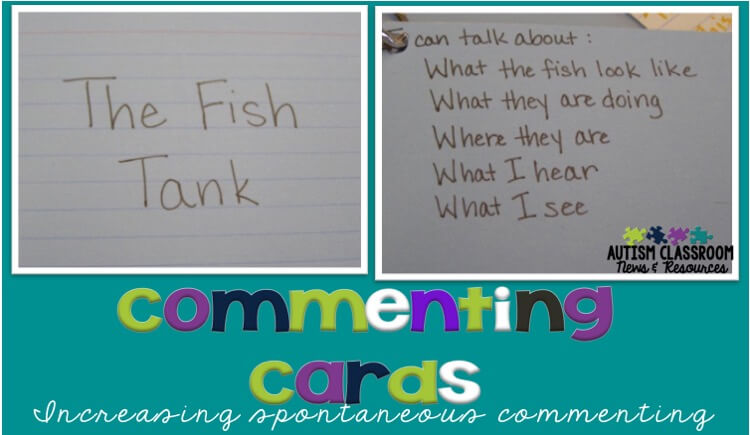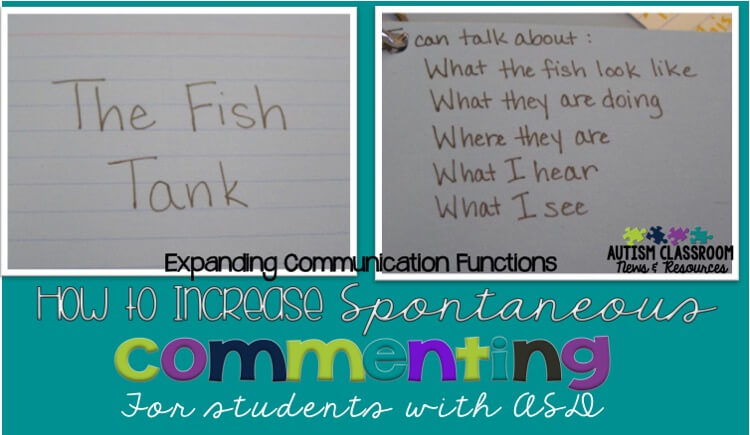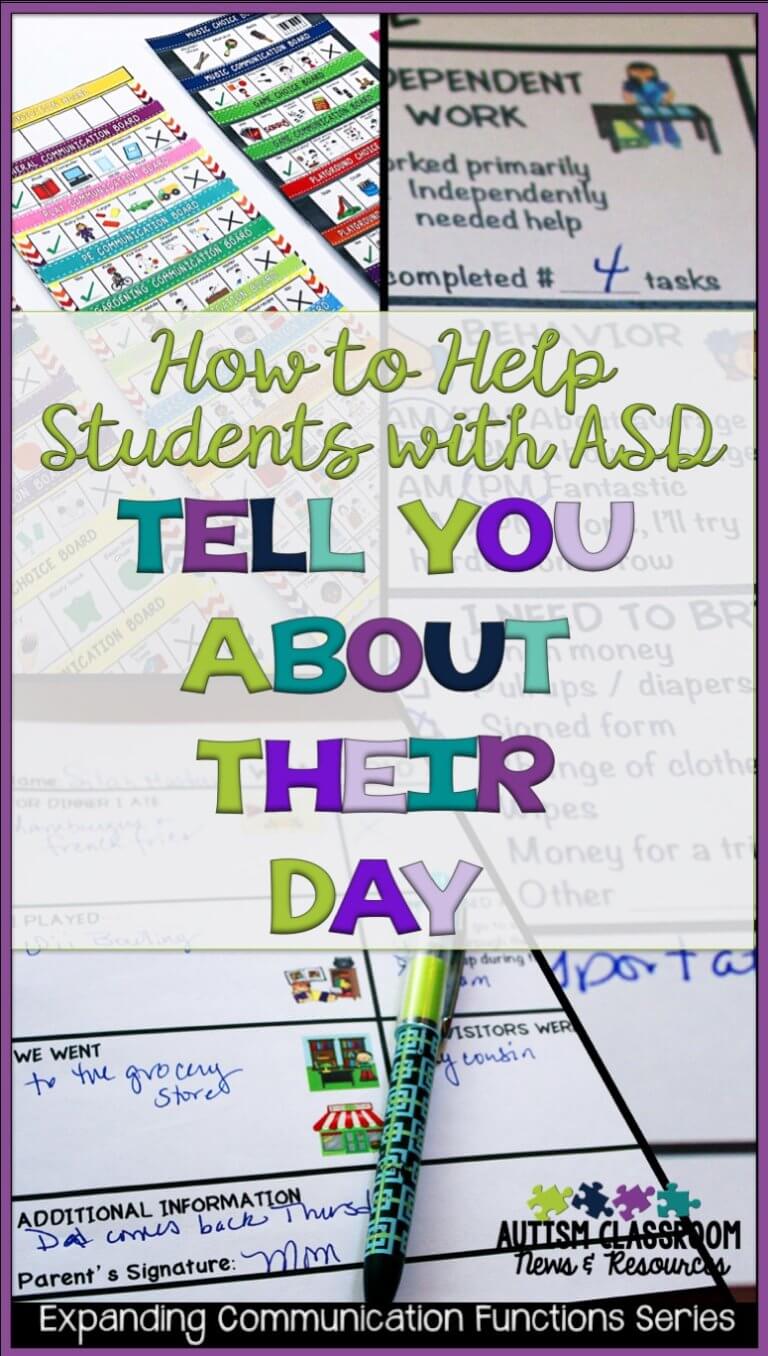Sam’s Success Story
Sam started making general comments using sentence strips. When he got the hang of it, he started more spontaneous commenting. He started making appropriate comments on things and events that no one had taught him with. He started making comments beyond ‘I see,” and other cues on sentence strips. Sam is the poster child for making the leap to spontaneous commenting.
 Dante and Bonnie’s Dilemma
Dante and Bonnie’s Dilemma
Dante only comments during morning meeting when every day he says something about the weather. The teacher set it up that way to teach it to him, but he’s having trouble making a leap to spontaneous commenting.
Bonnie is commenting more in about things she likes, but it often takes the form of the following:
- Bonnie requests her favorite food.
- Teacher gives Bonnie her favorite food.
- Bonnie tastes it and says “Yum” using her speech-generating device.
But Bonnie doesn’t really comment about other foods she eats. She also is making the same comment each time, rather than generating a spontaneous comment about new situations.
Why Is Making Comments So Hard?
So, your students may have started commenting, but they only do it when they are forced to by the teacher. In other words, they are commenting in a rote kind of manner–the same comment or kind of comment. The comment happens at the same time everyday. And if the teacher didn’t pause and wait for it, the comment probably wouldn’t happen.
These are great places to start, but of course we always want our students to do more. So what’s the next step? Getting students to make good comments on their own is really tough. It requires that students be motivated to interact for social purposes and that we are able to successfully fade our cues or prompts (as I talked about when talking about sentence strips). It also requires the students to generate language appropriate to the situation, which can be tricky.
What Can We Do?
The best thing we can do to increase spontaneous commenting is to teach a ton of examples and set up lots of opportunities for practice. Students need to practice the skill repeatedly to maintain it and in lots of different situations to generalize it. So let me share what I see as the next steps and then a trick that worked well for one student.
- Go through your classroom schedule and identify 2 activities for the student in which you can create at least 5 opportunities for the student to comment on something. If you can’t get to 5, that’s ok. Once you get started you may find more. Put them in your Teaching Intervention Plan so everyone will work on them. Put them on your naturalistic data sheet to remind staff to address them. When they master 2 activities, target 2 more.
- Make visual cues for the staff so everyone remembers to take the opportunity of waiting for a student to make a comment.
- Have communication supports in each activity of the day to support commenting about different aspects of the activity. That way if the opportunity arises, the supports are in place.
- Vary the types of prompts you use to encourage commenting so that students don’t get in a rut. Our students are prone to follow routine, so the more we can shake it up, the more likely you might get spontaneity.
- Finally reinforce the heck out of spontaneous commenting when they happen. Make spontaneous commenting, where no one set them up or prompted them, be the most reinforced skill. Up the reinforcement in number or excitement factor to differentiate it from commenting when given a cue
Commenting Cards

Our team created these cards at the urging of the student’s mother. This is another great example of why it’s so important to have a team that includes everyone who interacts with the student, including the family. You just get better solutions.
This student was a lot like Dante. She learned and regularly commented specifically in the situations we taught her in, but she didn’t generalize or comment in situations we didn’t explicitly teach and require it. So, at mom’s suggestion, we created these comment cards. Here is how they worked if you want to try the same strategy for your students.
- We chose to have her take a walk with a typical peer everyday around the school. We set up 4 or 5 regular stops around the school that they might talk about. Sometimes we added special ones if something was added. The stops included bulletin boards, the classroom fish tank, art displays in the hallway, a window overlooking the playground or other windows, and the like.
- At each stop along the walk, the peer would make a comment about the designated item. He/she might comment on what the fish were doing. Then they would cue the student to look at the comment card. The comment cards, as you can see below, were not specific things to say. It was more a suggestion card of types of things she could say.
- In this way the student had 5 opportunities to comment on a variety of things around the school and supports and a model from the peer.
When we first implemented it, we saw what I thought we would see. She said the same comment at each place each day (e.g., I see a blue fish). However, one day, I don’t remember if the blue fish wasn’t visible or not, but instead she said, “The yellow fish is in the chest” meaning the yellow fish was in the little treasure chest at the bottom of the aquarium.
After that we didn’t get a lot of spontaneous commenting right away, but we did start to hear more commenting that she initiated in different settings and different types of comments happening on the walks.
I would love to make some comment cards for you in the future, but it just isn’t going to happen right now with everything I have going on. However, if there are specific activities that you think these types of comment cards would be useful for, let me know here or on social media and I’ll try to put some together in the future.
Check back this Sunday for some cool news and ideas! Until next time,








